
Overview
This article examines the crucial usability testing tools for direct-to-consumer (DTC) brands, underscoring their vital role in enhancing user experience and boosting conversion rates. By discussing tools such as Maze, UserTesting, and Hotjar, it provides compelling evidence of how these resources deliver actionable insights and data-driven strategies. Such methods lead to substantial improvements in customer satisfaction and profitability for DTC companies, making them indispensable in today’s competitive market.
Introduction
In the competitive landscape of direct-to-consumer (DTC) brands, the user experience is paramount; it can either propel a business to success or lead to its downfall. As companies endeavor to forge meaningful connections with their audiences, the critical role of usability testing tools becomes increasingly evident.
This article explores ten essential tools that empower DTC brands to refine their online presence, enhance customer satisfaction, and ultimately drive conversion rates. However, with a plethora of options available, how can brands discern which tools will genuinely elevate their user experience and set them apart from the competition?
Parah Group: Comprehensive Usability Testing and CRO Solutions
stands out as a premier full-service agency specializing in for direct-to-consumer (DTC) brands. Their strategy is anchored in , which they leverage to apply that significantly and profitability. Their comprehensive suite of services encompasses:
- User session recordings
- Competitor analysis
- Persuasive copywriting
- Customer surveys
- Ongoing A/B testing
By tapping into and meticulous analytics, Parah Group has achieved outstanding results for clients, including a remarkable on advertising, alongside significant boosts in and conversion rates. This holistic approach guarantees that every aspect of a client's website is , highlighting the critical role of usability testing tools in driving DTC brand success.
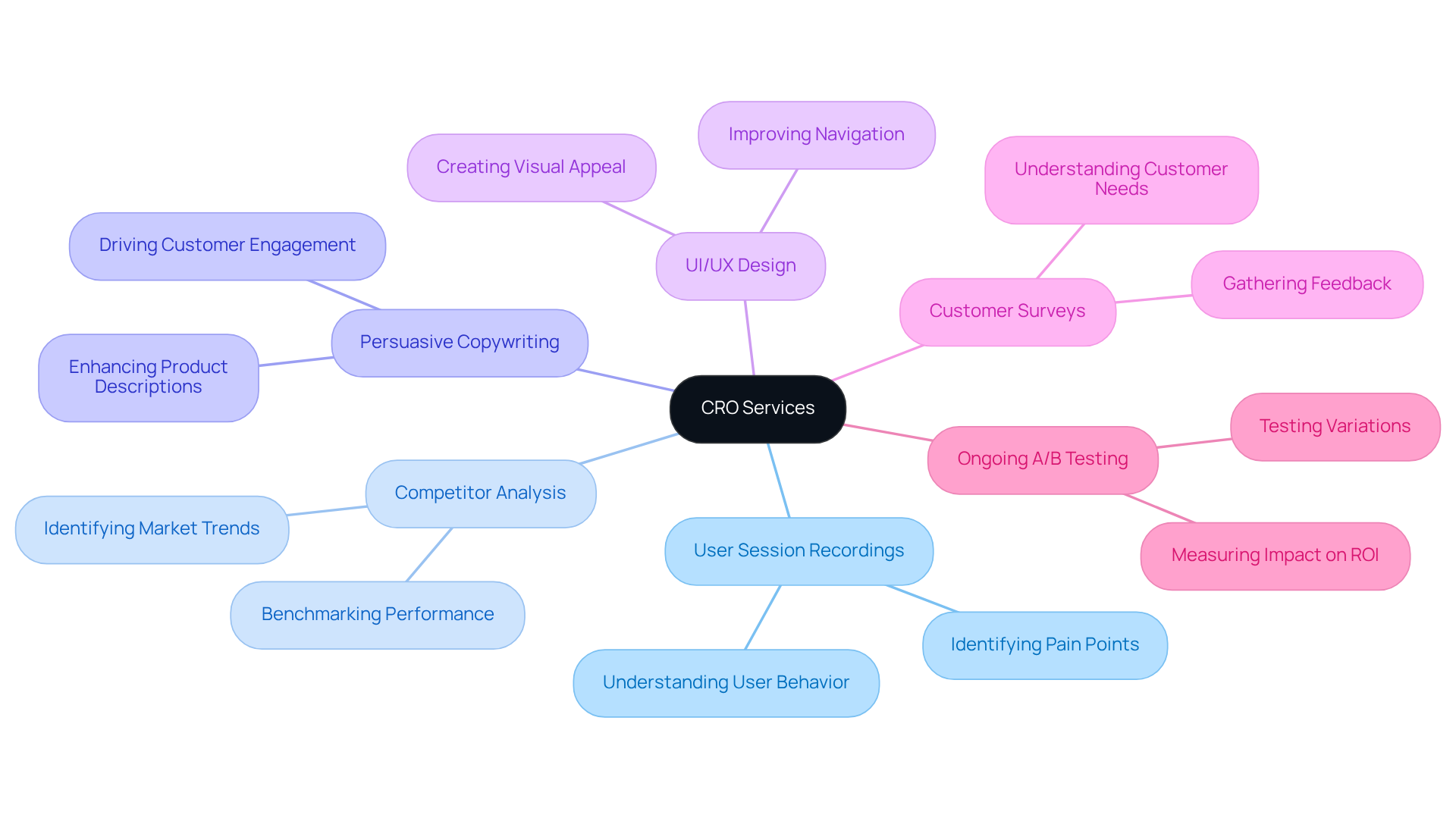
Maze: Streamlined User Testing for Rapid Feedback
Maze serves as a powerful research platform meticulously crafted to streamline the tools, empowering teams to swiftly gather feedback on both prototypes and live products. Its user-friendly interface facilitates the creation of tests that seamlessly incorporate tasks, surveys, and interactive prototypes, making it accessible for teams of all sizes. Equipped with features such as heatmaps and detailed analytics, Maze delivers actionable insights that illuminate participant behavior and preferences. This capability proves especially advantageous for , as it fosters a that can significantly enhance .
Research underscores that DTC companies leveraging can curate more personalized experiences, a critical factor in today's competitive landscape. By harnessing Maze, DTC companies can effectively refine their offerings, ensuring alignment with the evolving needs of their customers, ultimately driving higher sales rates.
For instance, 's case studies illustrate that companies employing in conjunction with CRO initiatives have achieved , including a 35% rise in and a 10% increase in revenue per visitor. This synergy between usability testing tools and CRO strategies emphasizes the vital role of tools like Maze in attaining and profitability.
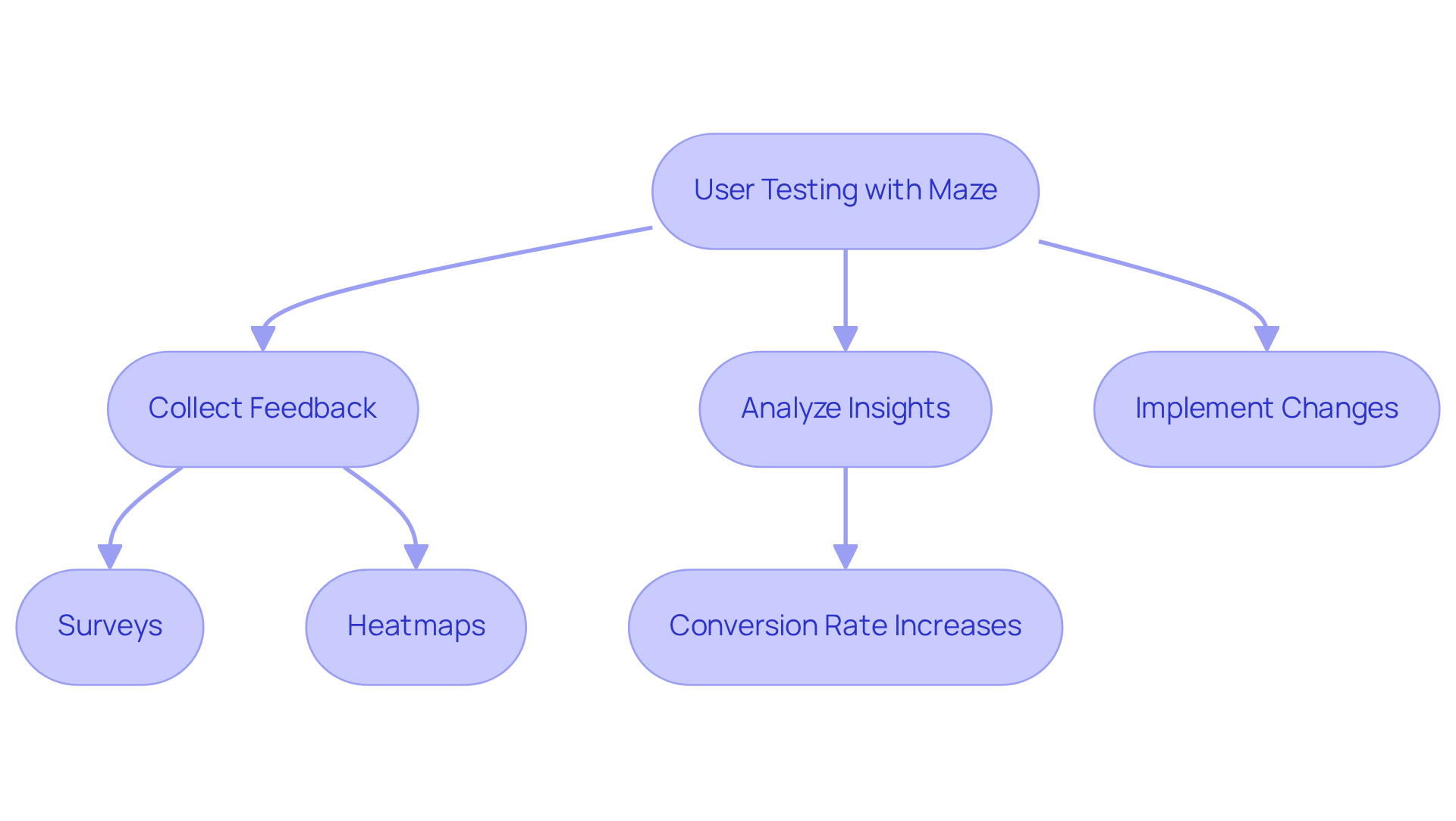
UserTesting: Real-Time Insights for Enhanced User Experience
UserTesting serves as a formidable platform that utilizes to deliver real-time insights into user interactions with products and websites. By empowering companies to observe individuals as they navigate their interfaces, UserTesting effectively identifies challenges and opportunities for enhancement. The platform accommodates both moderated and unmoderated , enabling teams to collect qualitative and quantitative data. This versatility establishes UserTesting as an indispensable asset for striving to elevate their through direct feedback.
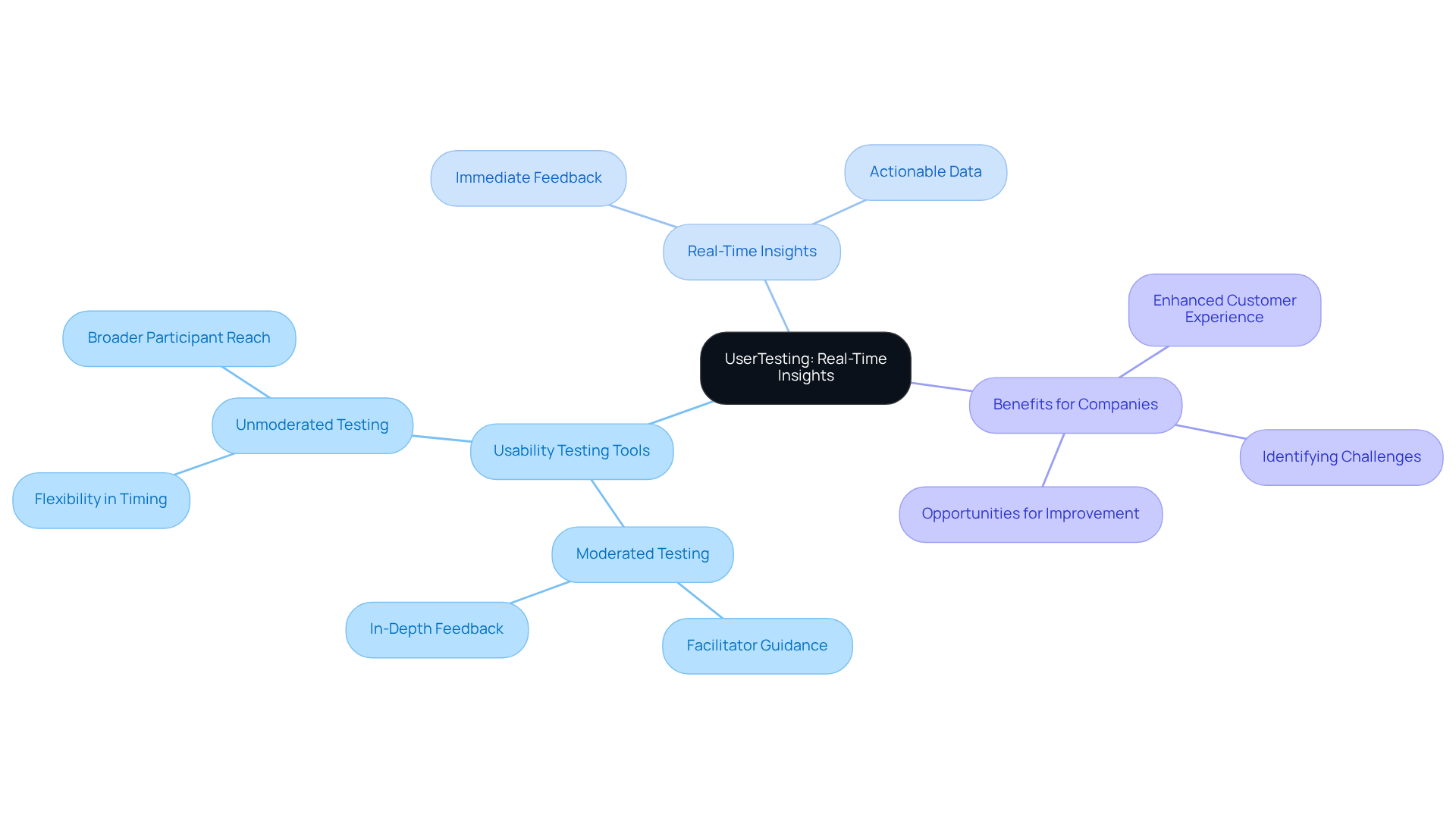
Lookback: Real-Time User Observation for In-Depth Insights
Lookback stands as a formidable research platform, empowering teams to conduct real-time usability testing using and interviews. It captures both video and audio of individuals as they engage with products, providing rich qualitative insights that unveil consumer motivations and frustrations. This information is invaluable for striving to enhance their . By leveraging Lookback, companies can pinpoint average consumer frustration points, which are critical for refining product design and functionality. For instance, studies reveal that 10.79% of visitors abandon a site when they cannot find what they need, underscoring the necessity of effective [usability testing tools](https://vwo.com/blog/usability-testing-statistics).
Experts in the field underscore the significance of qualitative data in UX design. Research indicates that merely , establishing Lookback as an indispensable usability testing tools resource for DTC companies that aim to improve their customer experience through targeted feedback.
Real-time observation tools like Lookback enable companies to witness user interactions as they occur, allowing for immediate adjustments based on user behavior. Notable DTC companies have successfully utilized to enhance their usability, leading to increased customer satisfaction and elevated sales rates. For example, case studies from illustrate that , such as targeted usability enhancements, can yield substantial improvements in , with one clothing company experiencing a remarkable 35% increase. By integrating such tools into their research processes, companies can ensure they remain competitive in a swiftly evolving market.
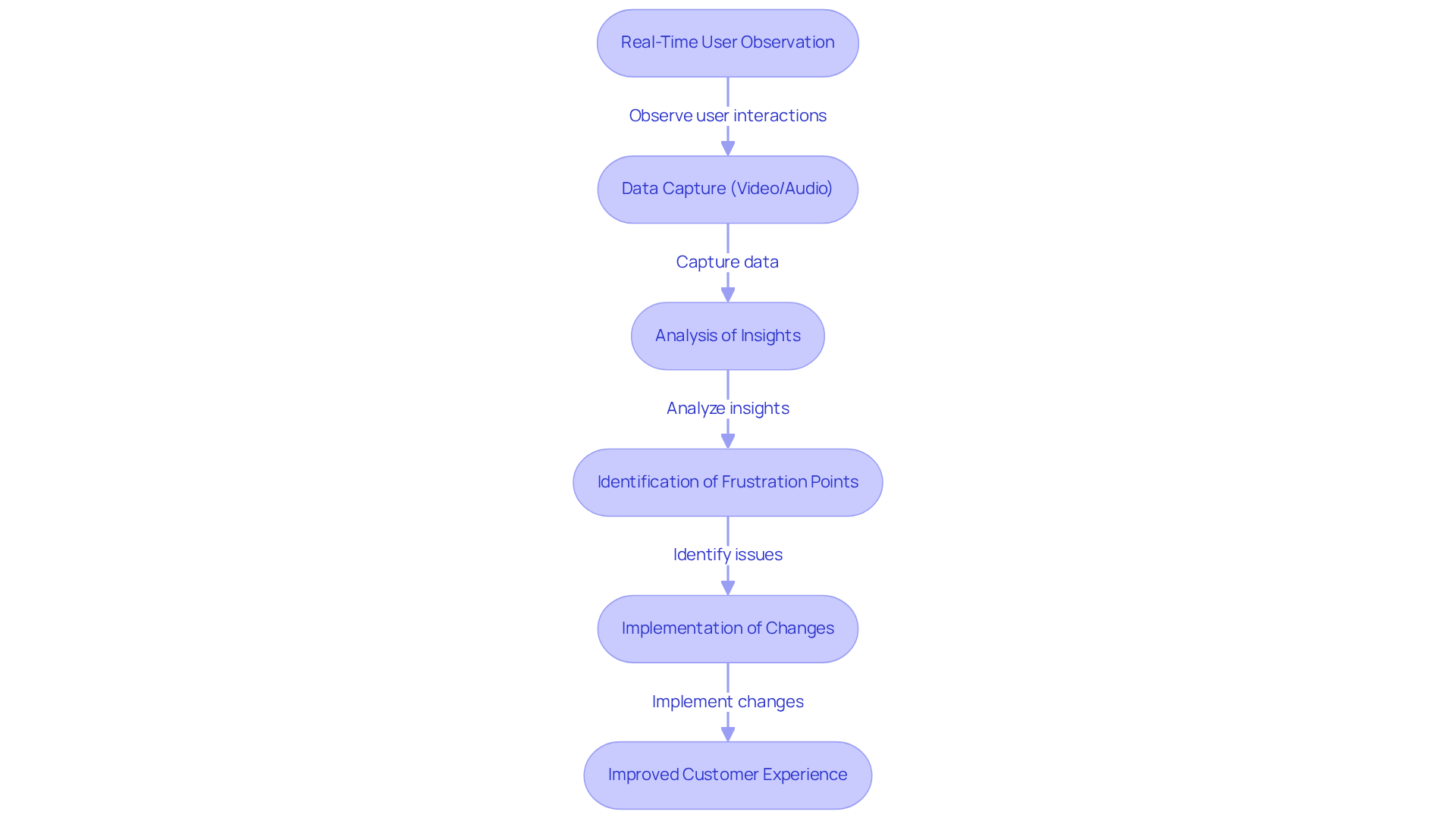
Optimal Workshop: Tools for Effective User Research and Testing
Optimal Workshop offers a robust suite of research tools, including card sorting, tree testing, and first-click testing, essential for aiming to enhance . These tools provide companies with profound insights into visitor navigation patterns and help identify pain points within their sites.
Companies utilizing Optimal Workshop have reported an average improvement of 30% in website navigation efficiency, leading to a more intuitive experience for their visitors. Transformational case studies conducted by reveal that companies have achieved remarkable outcomes from similar usability enhancements. For instance, a $30M clothing brand experienced a 35% increase in following improvements to their and .
UX researchers emphasize the importance of , noting that these techniques not only clarify how individuals categorize information but also improve the overall website layout. As Jakob Nielsen aptly stated, "Pay attention to what individuals do, not what they say," underscoring the critical need for to understand user behavior and ensure that design decisions align with user needs.
Furthermore, Optimal Workshop features a recruitment module that streamlines participant selection for studies, further augmenting its comprehensive capabilities. By leveraging these insights, DTC companies can refine their information architecture, ultimately driving , as demonstrated by Parah Group's proven strategies that have significantly enhanced profitability.
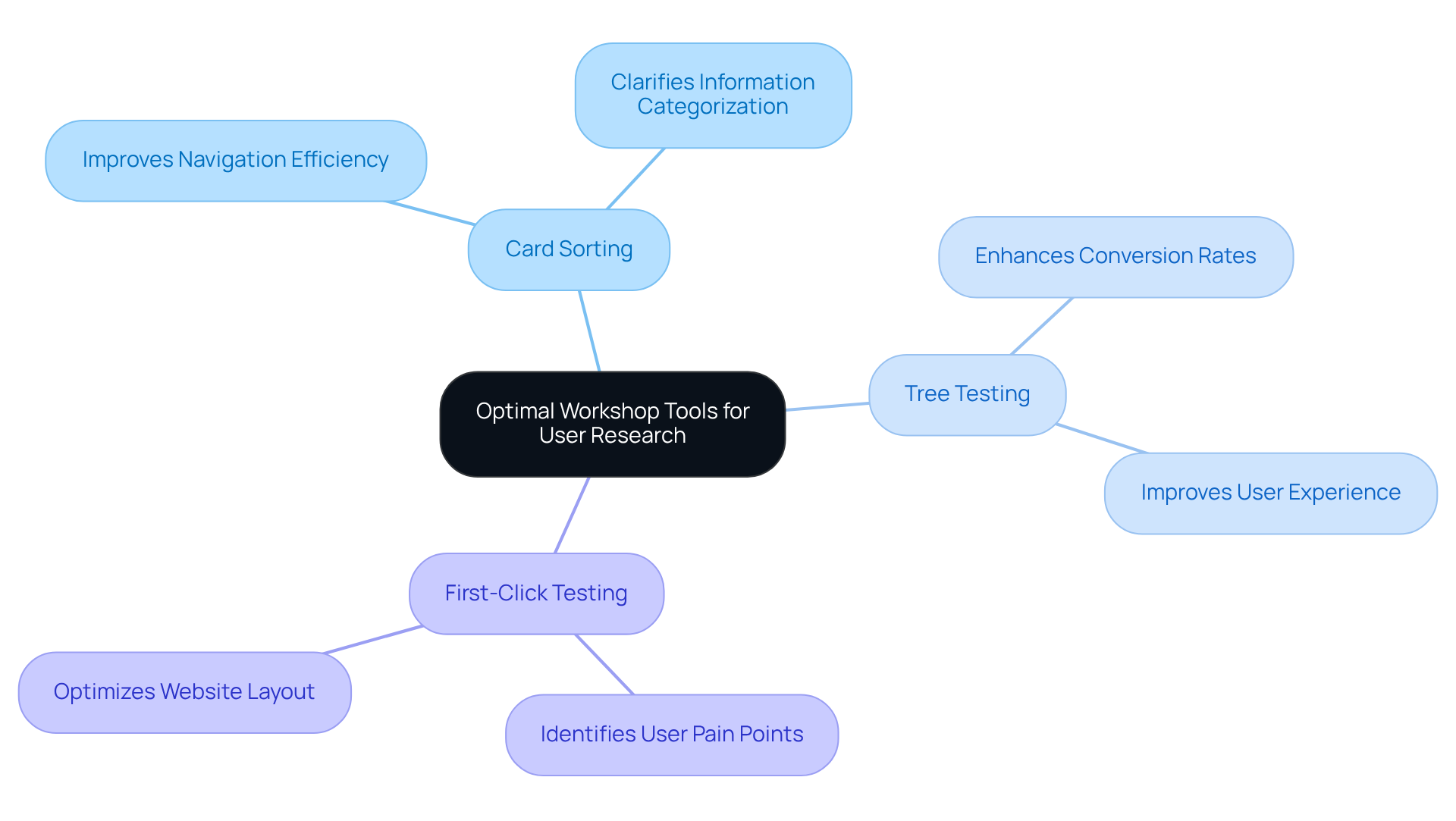
Hotjar: Visualize User Behavior with Heatmaps and Recordings
Hotjar stands as a formidable , providing heatmaps, session recordings, and feedback polls that empower to visualize visitor behavior on their websites. By meticulously analyzing where individuals click, scroll, and spend their time, companies can effectively identify areas of interest and potential friction points. The insights gleaned from Hotjar enable teams to make data-driven decisions that enhance and optimize success rates. Notably, the setup process for Hotjar is swift and uncomplicated, requiring less than 10 minutes for implementation.
in UX design, offering visual representations that guide brands toward creating intuitive interfaces. Brands leveraging Hotjar have reported average rate improvements of up to 23% year-over-year after integrating insights derived from heatmaps. Furthermore, Hotjar's rage click maps feature aids in identifying troublesome elements on websites, thereby enhancing behavior analysis. The impact of Hotjar's tools is evident, as numerous [DTC companies](http://parahgroup.com/blogs/10-facebook-ad-examples-that-drive-conversions-for-dtc-brands) have experienced and overall customer satisfaction.
For instance, a $30M clothing line achieved a remarkable 35% increase in conversion rates after refining their [user experience](https://moldstud.com/articles/p-the-future-of-user-centric-design-hotjar-as-a-leading-technology) through Hotjar's insights, while a $15M cleaning product company witnessed a staggering 73% improvement in (AOV) by utilizing behavior analytics. These compelling case studies illustrate the with usability testing tools.
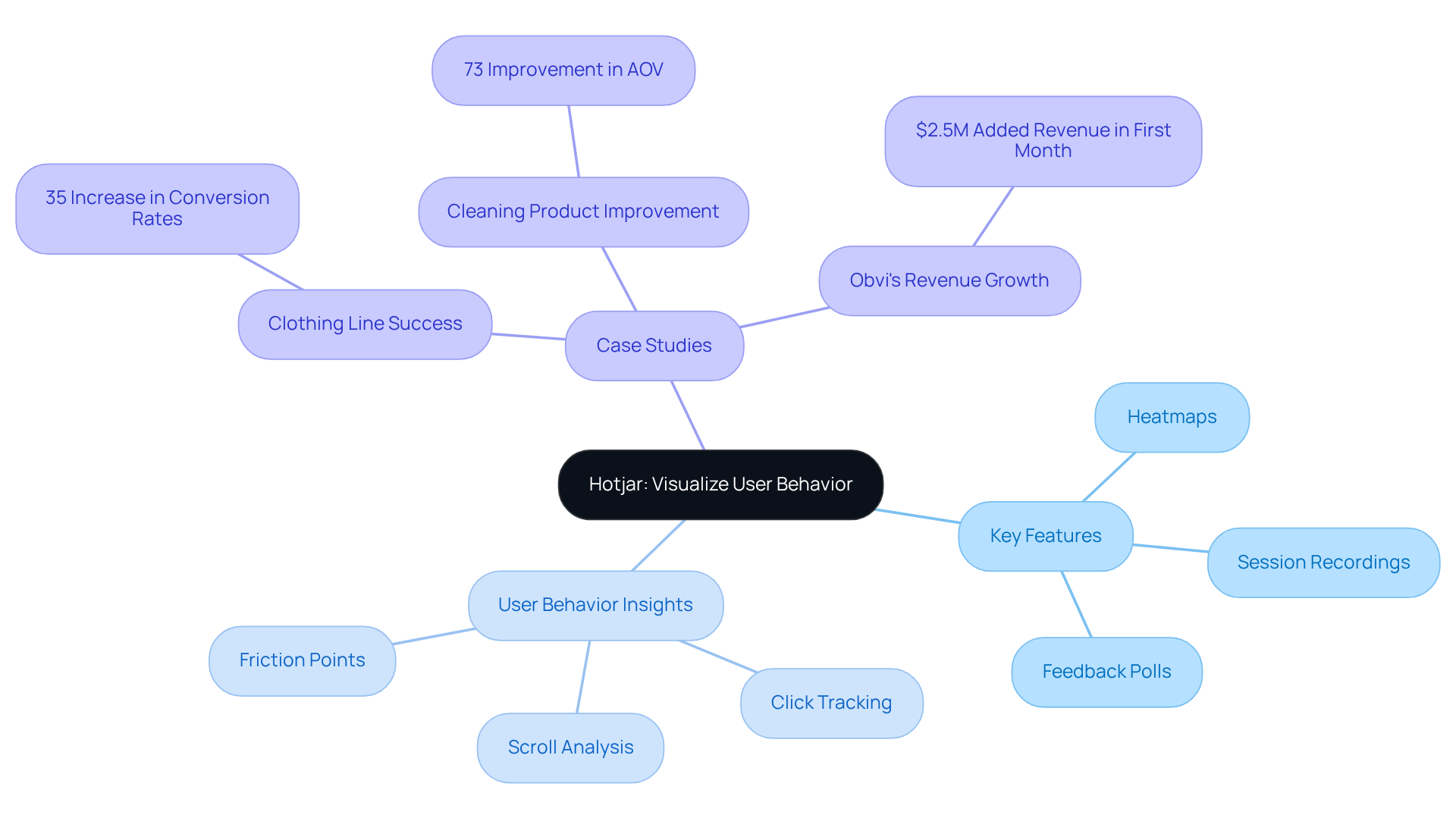
UsabilityHub: Design Feedback from Real Users for Better UX
UsabilityHub, now known as Lyssna, stands as a powerful platform dedicated to from real users. It provides various , such as first-click tests, preference tests, and design surveys, allowing to swiftly validate their design decisions. This rapid feedback mechanism is essential for crafting that significantly enhance usability.
For instance, companies like Bear Mattress have leveraged UsabilityHub to refine their user interfaces, mirroring the strategies employed by to . By harnessing insights from usability testing tools, Parah Group has successfully increased DTC product profitability through innovative optimization strategies aimed at elevating performance metrics.
One notable case study involved a $30M clothing brand grappling with low sales. By revamping the homepage to highlight social proof and testimonials, adjusting product pricing, and integrating gamified features based on user feedback, they achieved a in and a 10% rise in revenue per visitor.
UX designers consistently underscore the in the design process. As one designer aptly stated, 'Individuals overlook design that disregards individuals,' underscoring the necessity of aligning design with user needs. DTC companies can extract valuable insights by using usability testing tools like UsabilityHub to conduct tests that reveal preferences and pain points, ensuring their products resonate with their target audience.
This iterative approach not only enhances the customer experience but also fosters loyalty, as 80% of clients are inclined to pay more for an exceptional experience. Furthermore, research indicates that just five participants can uncover 85% of usability issues during testing, reinforcing the efficacy of usability testing tools in gathering design feedback.
By integrating , DTC companies can develop interfaces that are both visually compelling and functionally effective, ultimately driving higher conversion rates. To fully leverage the benefits of consumer feedback, DTC companies should prioritize regular usability testing tools and adapt their designs based on the insights gained.
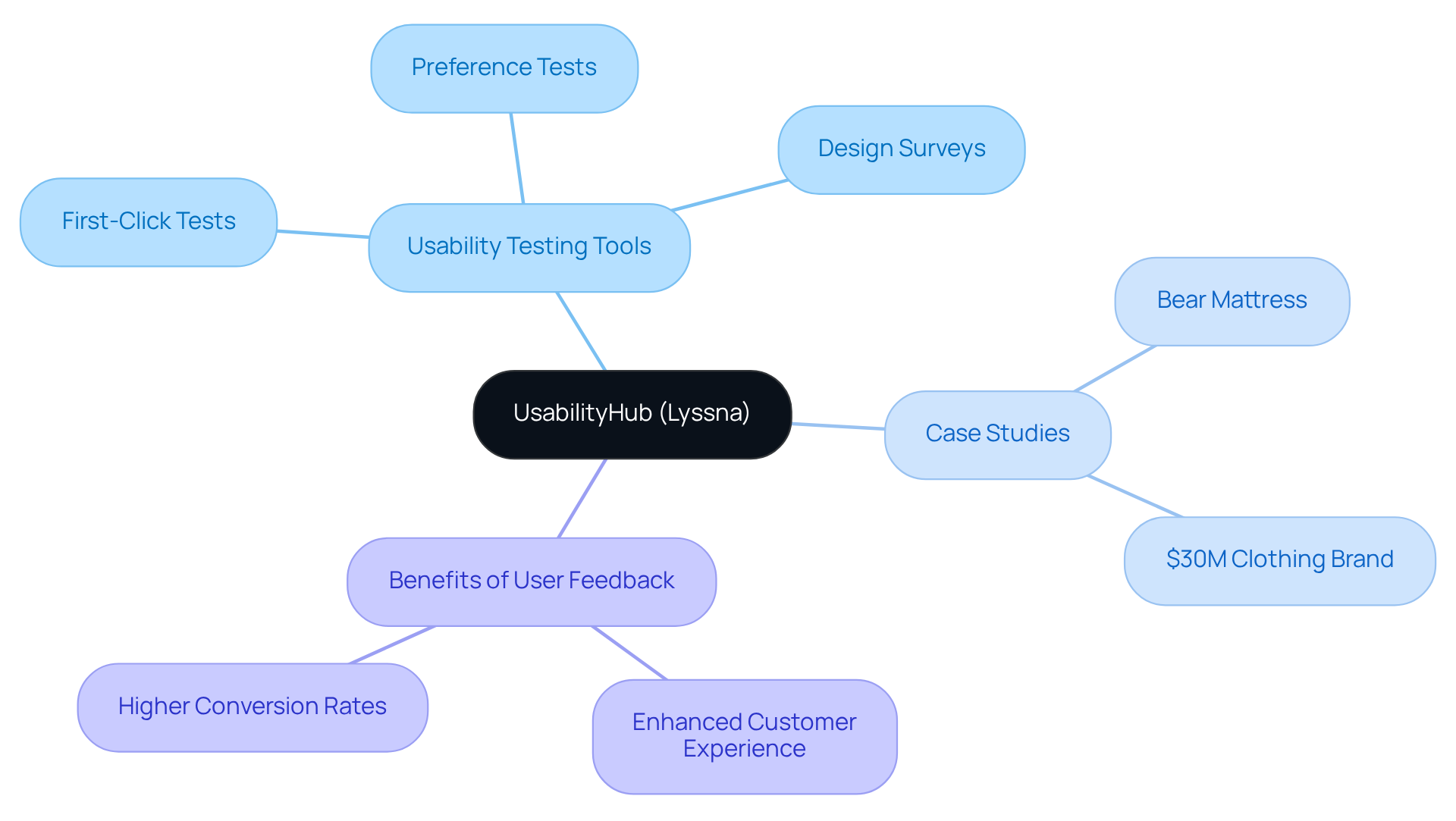
Crazy Egg: Track User Interactions for UX Optimization
Crazy Egg serves as a powerful visual analytics tool that empowers to monitor interactions using , including heatmaps, scrollmaps, and session recordings. By visualizing consumer engagement, these companies can identify critical areas for improvement.
For instance, organizations utilizing Crazy Egg have reported , with some achieving an astounding 433% increase after optimizing their designs based on . This tool is among the usability testing tools that facilitate , enabling teams to experiment with diverse design elements and strategies, ultimately enhancing user satisfaction and driving higher success rates.
Notably, DTC companies leveraging Crazy Egg's features have experienced average improvement rates of up to 7.81% per session, underscoring the tangible benefits of .
In a recent case study, aided a $30M apparel company in redesigning their homepage by emphasizing social proof and optimizing product pricing, resulting in a 35% increase in and a 10% boost in revenue per visitor. Similarly, another client, a $15M cleaning product company, witnessed a 73% rise in average order value after implementing strategic adjustments, such as introducing bundles and multi-packs informed by consumer insights.
Crazy Egg's pricing starts at $29 monthly, making it an economical option for companies seeking to enhance their . Compared to competitors like Hotjar and heatmapAI, Crazy Egg offers a straightforward method for tracking interactions, which can be particularly beneficial for companies aiming to improve their success rates.
As UX analyst Aarron Walter asserts, 'Designers shooting for usability testing tools is like a chef shooting for edible,' emphasizing the critical role of usability in achieving successful outcomes.
To leverage Crazy Egg effectively, DTC business owners should first establish clear and continuously analyze the insights provided to make informed design decisions.
Userfeel: Remote Usability Testing for Diverse User Feedback
Userfeel stands out as a premier platform for , empowering to extract invaluable insights from real users across diverse demographics. By offering video recordings of individuals interacting with websites and applications, Userfeel equips teams to pinpoint usability challenges and understand user behavior in various contexts. This rich diversity in feedback is crucial for crafting that resonate with a broad spectrum of individuals.
Research indicates that companies leveraging diverse consumer feedback can significantly enhance their ; indeed, 75% of online shoppers prefer personalized interactions. Notably, DTC companies utilizing Userfeel have reported increased engagement and sales metrics by effectively addressing the unique needs of their varied customer base.
For example, case studies from illustrate that organizations implementing tools—such as and —alongside techniques, have achieved remarkable outcomes, including:
- A 35% surge in conversion rates
- A 10% increase in revenue per visitor
By prioritizing in their testing processes, DTC companies can ensure their products and services are accessible and appealing to all potential customers, ultimately fostering growth and loyalty.
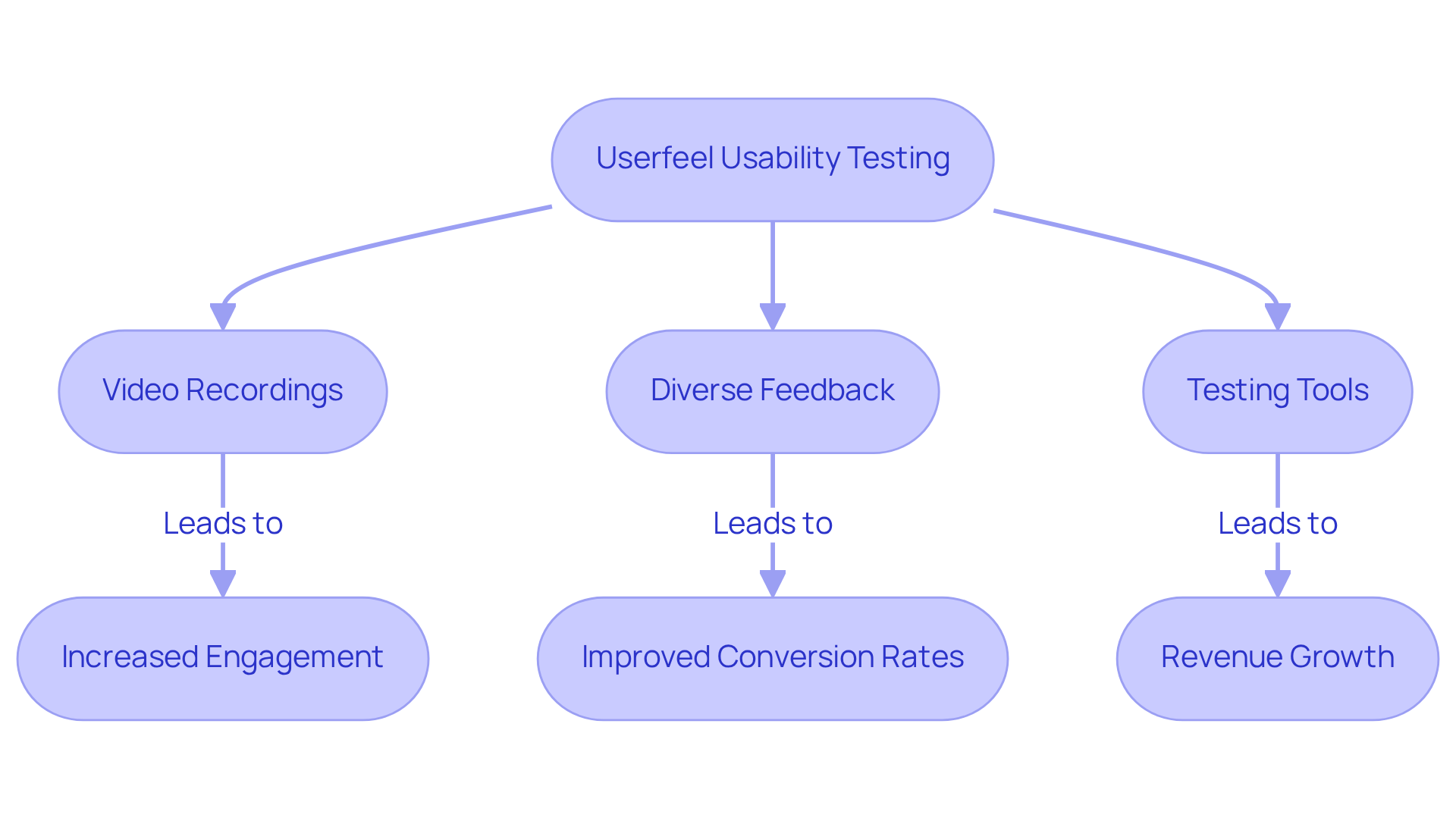
Testbirds: Crowdtesting for Comprehensive Usability Insights
Testbirds stands as a premier that expertly connects with a vast global network of testers, facilitating the acquisition of comprehensive and insights. By employing real individuals to assess products in diverse environments, Testbirds utilizes usability testing tools to deliver crucial insights into usability, functionality, and overall user experience. This innovative approach uncovers issues that traditional testing often overlooks, ensuring that products align with client expectations and significantly . Notably, usability testing tools for participant testing can , establishing them as an indispensable resource for companies aiming to .
Furthermore, organizations engaging in crowdtesting can expect a remarkable increase in , with potentially boosting conversions by as much as 400%. Industry leaders assert that leveraging crowdtesting not only elevates product usability but also cultivates , as 80% of users express willingness to pay a premium for an exceptional experience. By integrating Testbirds into their development processes, DTC brands can effectively tackle usability challenges and develop products that resonate profoundly with their target audience.
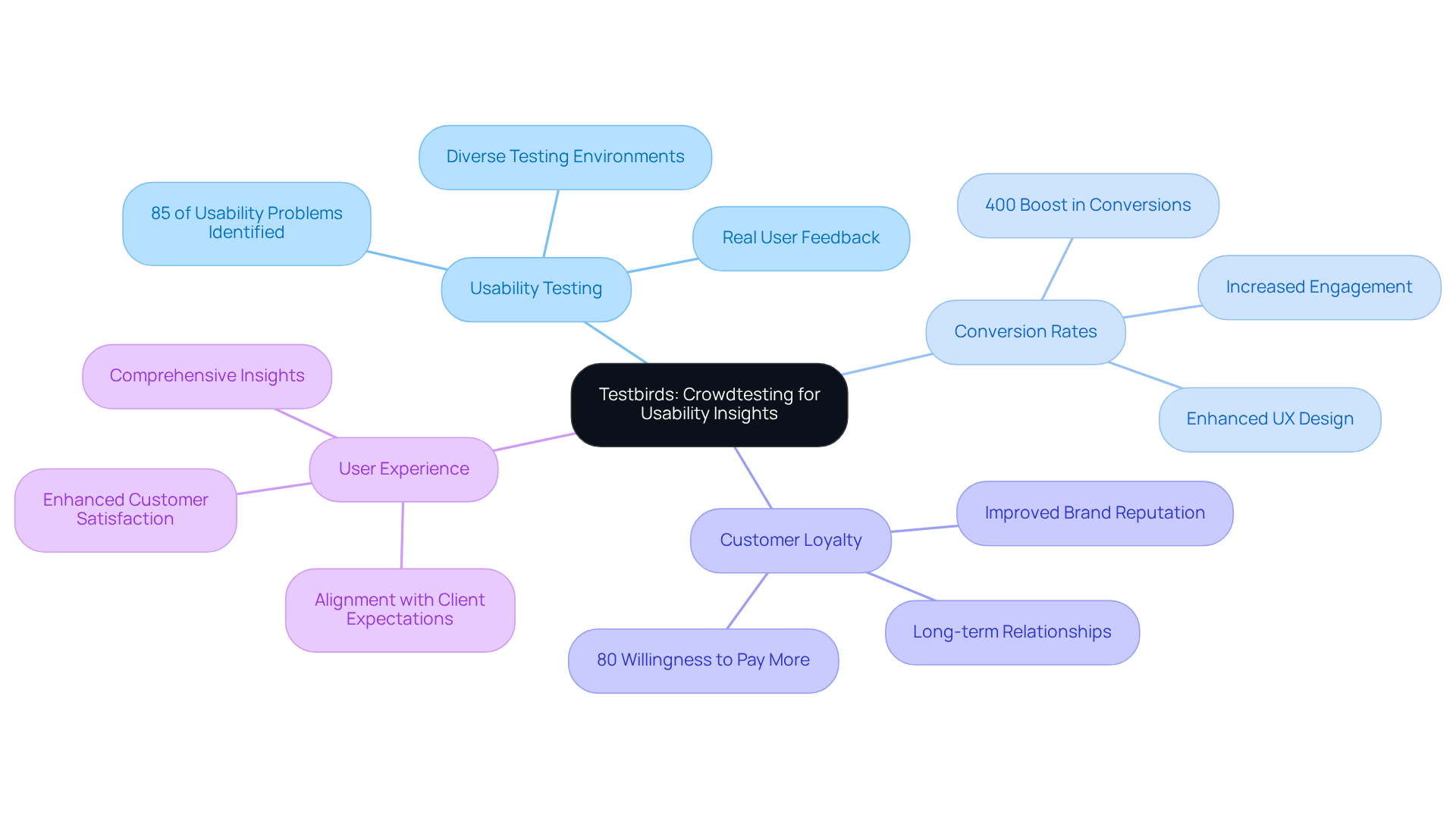
Conclusion
The significance of usability testing tools for direct-to-consumer (DTC) brands is paramount. These tools are indispensable for optimizing user experience, driving conversion rates, and ultimately enhancing profitability. By utilizing a diverse array of usability testing solutions, DTC brands can acquire invaluable insights into user behavior, preferences, and pain points, enabling them to tailor their offerings effectively.
In this article, we have highlighted various usability testing tools, each offering unique features and benefits. From Parah Group's comprehensive CRO solutions to Maze's rapid feedback capabilities, UserTesting's real-time insights, and Lookback's in-depth user observations, these tools collectively empower brands to refine their websites and products. Furthermore, platforms like Optimal Workshop, Hotjar, UsabilityHub, Crazy Egg, Userfeel, and Testbirds provide diverse methodologies for gathering user feedback, ensuring that brands can adapt to the ever-evolving needs of their customers.
In a competitive landscape, leveraging usability testing tools is not merely a luxury; it is a necessity for DTC brands striving for sustainable growth. By prioritizing user feedback and conducting regular testing, companies can create intuitive, user-centered designs that foster customer loyalty and drive sales. Embracing these tools will not only enhance user experience but also lay a solid foundation for long-term success in the digital marketplace.
Frequently Asked Questions
What is Parah Group known for?
Parah Group is a full-service agency specializing in Conversion Rate Optimization (CRO) for direct-to-consumer (DTC) brands, utilizing usability testing tools to enhance user experience and profitability.
What services does Parah Group offer?
Parah Group offers a comprehensive suite of services that includes user session recordings, competitor analysis, persuasive copywriting, UI/UX design, customer surveys, and ongoing A/B testing.
How has Parah Group impacted their clients' ROI?
Parah Group has achieved a remarkable 36% increase in ROI on advertising for their clients, along with significant boosts in average order values (AOV) and conversion rates.
What is Maze and how does it benefit DTC companies?
Maze is a research platform designed for usability testing that allows teams to gather rapid feedback on prototypes and live products. It helps DTC companies refine their offerings and enhance customer experiences, which can lead to higher sales rates.
What features does Maze provide?
Maze offers features such as heatmaps, detailed analytics, and the ability to create tests that include tasks, surveys, and interactive prototypes, all of which provide actionable insights into participant behavior and preferences.
What results have DTC companies seen by using usability testing tools like Maze?
DTC companies using usability testing tools in conjunction with CRO initiatives have reported a 35% rise in conversion rates and a 10% increase in revenue per visitor.
What is UserTesting and what does it offer?
UserTesting is a platform that uses usability testing tools to provide real-time insights into user interactions with products and websites, helping companies identify challenges and opportunities for improvement.
What types of usability testing does UserTesting support?
UserTesting supports both moderated and unmoderated usability testing, allowing teams to collect both qualitative and quantitative data.
Why is UserTesting important for DTC companies?
UserTesting is essential for DTC companies as it allows them to elevate their customer experience through direct feedback, helping to inform necessary enhancements to their products and websites.
FAQs











